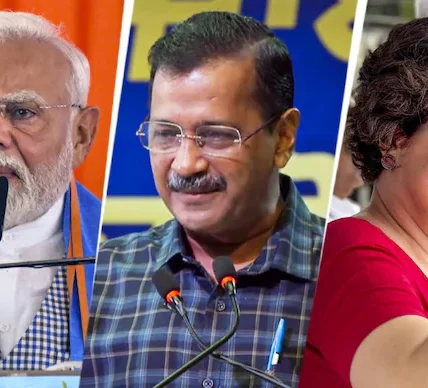“Iran and Israel Latest News 2025: Real Issues, Misunderstandings & What’s Fueling the Fire”
Introduction: Storm brewing in the Middle east
The terms Iran and Israel have never been comfortable bedfellows, at least, in the past several decades. An ideological and political rivalry which initially existed has developed into a much more dangerous form. With the world still walking on eggshells amid the prevailing global uncertainties, the conflict between the two large Middle Eastern powers re-ignited speculations of an eventual war in the region Iran and Israel.
By the year 2025, this war has ushered in a new, unpredictable level. The use of drones, spying, hacking and proxies has developed a web of unrest; not only to Iran and Israel, but also to the whole dimension of the world order.
Deciphering the inherent March of War
This is not that kind of account of an abrupt breakdown. The hostility between Iran and Israel dates back to the Islam Revolution of 1979. Having overthrown the Shah, Iran took a deep-seat anti-Israel stand and claimed its support to the Palestinian cause. On one hand, Israel which felt threatened by its security by other Arab states considered the Iranian expansion as an existential threat Iran and Israel.
Some of the factors that lead to this enduring animosity:
Nuclear ambitions: Israel takes a hard stance against the Iranian nuclear capabilities and consider it as a red line.
Proxy Warfare: Iran sponsors groups such as the Hezbollah and Hamas which Israel regards as terror groups.
Cyber Threats: The two nations have also engaged in the cyber aspect of attack and have attacked respective infrastructure and sensitive information.
Ideology separation: The government of Iran denies the legitimacy of Israel.
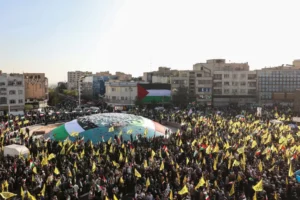
Street demonstrations have continued to be an outstanding sign of opposition to Israel in Iran.
Flashpoint 2025: So What Caused the New Heightening?
We need to go back at the start of the year. An Israeli airstrike of Iranian weapons storehouse in Syria took the lives of several Iranian agents, according to a covert airstrike. This was perceived by Iran as an affront against its sovereignty. It immediately counterattacked using a row of drone attacks over territories controlled by Israel.
In only a few days a pattern could be observed:
- The Israeli water treatment installations were subjected to Iranian cyber groups.
- It is said that Israeli intelligence did some sabotage in oil refineries in Iran.
- The Hezbollah fired more rockets in southern Lebanon.
- The Iron Dome defense system of Israel shot down dozens of on-coming drones.
The most dangerous thing was when both the countries alluded the possibility of direct military involvement, a situation that had been dreaded by the world over the years.
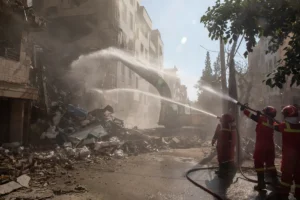
An Israeli attack on Syria is another icing on an Iran and Israel fire.
The Dimension of Proxy War
It is not only the fight between Tehran and Tel Aviv. It is waged through front organizations and makes it even more complicated.
Hezbollah in Lebanon: Hezbollah in Lebanon is still a problem to Israel as they repeatedly attack Israel along the northern border and they are armed and sponsored by Iran.
Hamas in Gaza: In Gaza, Hamas, in spite of being Sunni-led, is supported by Iran and Israel it further contributes to the tension.
Syrian Battlefield: Syria is a platform of attacks, airstrikes, and intelligence operations by the two countries.
The risk of this indirect warfare lies in the fact that it features civilian deaths, destabilization of the region, and enhanced chances of a miscalculation Iran and Israel.
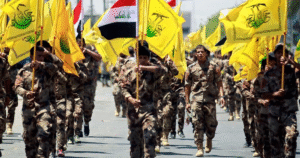
Hezbollah backed by Iran has been one of the most influential players in the game of proxy war.
Living in Danger: The cost of being Human:
As long as governments spend their time arguing, the common citizens are the ones who are able to suffer the most.
Cyber attacks are ongoing hence there are disruptive blackouts in Tehran. The economic hardship is not the only thing people dread especially foreign sabotage. In the meantime families in Tel Aviv and Haifa flee to bomb shelters when siren is going. Children are taught to duck and cover in school. Firms are afraid of growing. There is a sense of anxiety in the air like smoke and mist.
And then there is Gaza and Lebanon where there is a state of civilian life in between militant groups and retaliation against them.
These individuals are not mere numbers. They are schoolchildren, homemakers, small-town store owners, nurses who are attempting to live under the constant risk .
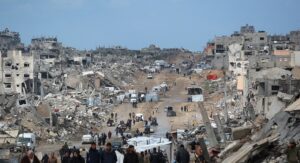
Life in Israel is disrupted by fear of pawning rocket attack.
The Global Chessboard: Who is On What (Which) Side?
This war goes beyond a local phenomenon. It has also attracted world powers and each of them has their strategic interest.
United States: The US is an ardent friend of Israel and it remains to give the country military assistance as well as the intelligence one. Nevertheless, there has been a call to de-escalation by the Biden administration, as a bigger war was feared in the Middle East.
Russia: Russia is in a balancing position through its military presence in Syria, where it is close with Iran and at the same time it is careful not to confront Israel.
China: China is mostly a silent force in the region as it has economic interests in the region that speak in quieter tones.
Europe: The EU has been demanding peace talks, which pay more attention to diplomacy and humanitarian assistance.
Cyber Warfare The quiet battlefield
War in the modern world does not only take place with the aid of guns. The cyber war between Iran and Israel is continuous; and is increasing its temper.
Unit 8200 of Israel is considered as hackers of a high level.
The hospitals, banks, and energy grids have been attacked by the IRGC cyber units of Iran.
Such attacks even tend to be unreported, yet they interfere with lives, security and give major reservations to the future of digital wars.
Caption: The new form of warfare weapon is cyber warfare.
Peace Talks: Is it Real?
In spite of the tension, back channel negotiations have not ceased. Small agreements have been attempted to be mediated by countries as Qatar, Oman, and even Turkey, including:
- Prisoner exchanges
- Temporary ceasefires
- Humanitarian access to border
Peace in full scale? That is still no more than a fantasy.
Nevertheless, there is hope. History has proved that sometimes even the most hated enemies tend to go to the table, when there is enough pressure, at the right time, and when the international political situation is favorable Iran and Israel.
Voices of Hope: both sides of the story
Now, we switch to the human part of the story.
- One of the Jewish-Israeli mothers whose son is in the IDF says, we pray daily; that he be back home safely. Mothers cannot be allowed to live that way in fear.”
- A Youthful Iranian student who is learning to be a doctor named Ali adds: “We are not willing to war. We desire peace, stability and opportunity to construct our lives.”
This is what the voices count. Since behind any armed conflict are people who are real and who have their aspirations, fears and need to live in peace.
What Are the Consequences?
Up to this point, the case is very unpredictable. Every action, every reaction, is like a chess game – except with nuclear prospects, financial implications and humanitarian stakes of cosmic magnitude.
Not only is what the world is currently watching a conflict of two nations, but it is also a prospective turning point in the history of modern Middle East.
It is the Moment of Reflection
It is not a headline such as Iran vs Israel. It is the tale of ideas, terror, power and survival. One can talk about the politics, but it is difficult but much more significant to talk about the people.
We do not want to enable anger to relegate empathy. And may the people in the positions of authority realize the strength to take a step back, to take a breather, to be mindful that all attacks fall upon the doorstep of somebody, on the heart of somebody, on the hope of somebody.
Simply because wars can be waged by countries, but peace can only be made to exist with people.
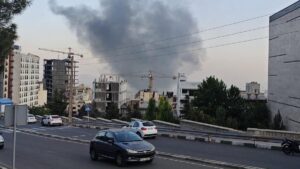
Peace remains the mightiest vision even in a conflict torn region.
Root Cause Problem Statements and Misperceptions: Why Iran and Israel Can not See Eye to Eye
Although most individuals may perceive that the conflict between Iran and Israel lies squarely on either the naval or the political platform, the truth is that it is a messy knot of electioneering motives, ideological dogmas, and historical misgivings. This is the analysis of their main problem statements, and misconceptions that stoke the flames:
1. Nuclear Shadow
Problem Statement:
The urge by Iran in nuclear technology does not satisfy Israel because they feel that this is a direct move to gaining access to nuclear armory.
Iran’s View:
Iran claims that its nuclear project is only aimed at energy production and man research. It condemns Israel and the west, asking them to be hypocrites looking at the Israel undeclared nuclear weapons.
Misunderstanding:
The Iranians view any opposition to their nuclear development as a ploy by the western-Israeli forces to maintain Iran as a weak nation and Israel views any development made by Iran as a threat to their very existence.
2. The Proxy Puzzle
Problem Statement:
Iran backs militia such as Hezbollah (Lebanon) and Hamas (Gaza) which frequently attack Israel as well. Israel refers to these as terror proxies that are meant to annihilate her.
Iran’s View:
Iran considers this assistance as its religious and moral duty to protect the oppressed, and Palestinians are in the first place.
Misunderstanding:
Iran presents itself as an anti-Zionist not an anti-Jewish state, but it is also an existential threat to Israel. Such ideological gap obstructs diplomatic advancement.
3. Fame and Validation
Problem Statement:
Iran never accepted the state of Israel. Its officials frequently cite publicly that Israel does not have the right to exist.
Israel’s View:
This rejection in itself is perceived by Israel as an essential threat a basic role when one considers the question of how to negotiate an arrangement of peace with one must declare ones existence?
Misunderstanding:
Iran is forming its position as anti-Zionism but not opposing Judaism or Israeli. The media and political speeches tend to obscure these lines in the message.
4. Secrecy and Assassinations
Problem Statement:
Both the countries raise allegations against each other of involving themselves in secret assassinations. Iranian nuclear scientists are said to have been assassinated by Israel. Iran is suspected of planning against the Israeli diplomats and civilians overseas.
Mutual Impact:
These covert activities increase suspicion. Each killing is a revenge rather than justice.
Misunderstanding:
One country considers that it is on defense yet the other perceives it as provocation or terrorism.
5. Cyber Cold War
Problem Statement:
The two countries, Iran and Israel are both in silent yet strong cyber warfare. Both parties have erred on ethical grounds, ranging between interfering with nuclear programs and even hacking hospitals.
Misunderstanding:
Both feel that they are only doing self-defense. However, such secret strikes leak and end up wounding civilians which is aggravating.
6. Religious and Ideological Stories
Problem Statement:
The regime in Iran rests on Islamic theocracy. Israel is a democratic state of Jews. There is violent conflict between their stories of the land, history and divine right.
Misunderstanding:
It is very difficult to compromise because of religious ideology. Politics is personal when one party thinks that he/she is defending something sacred and vice versa.
7. Non Direct Communication
Problem Statement:
Iran and Israel do not have a direct diplomatic connection. All this is done by third parties–if ever.
Misunderstanding:
This is a foundation of sow false stories, erroneous inferences, and lost chances of peace.
A Circle to be Busted
These political debate issues and misconceptions are not merely political debate issues but they are based on fear, anger and decades of unexpressed voice. Unless there exists open communication and understanding between the parties of the grievances, any move toward peace will serve as a back slip by both parties.
To end this cycle, it begins with knowledge- since in some cases, the most vicious battle is not waged on the battlefield but in the stories that we tend to accept.
Written by – Nitasha Chauhan



